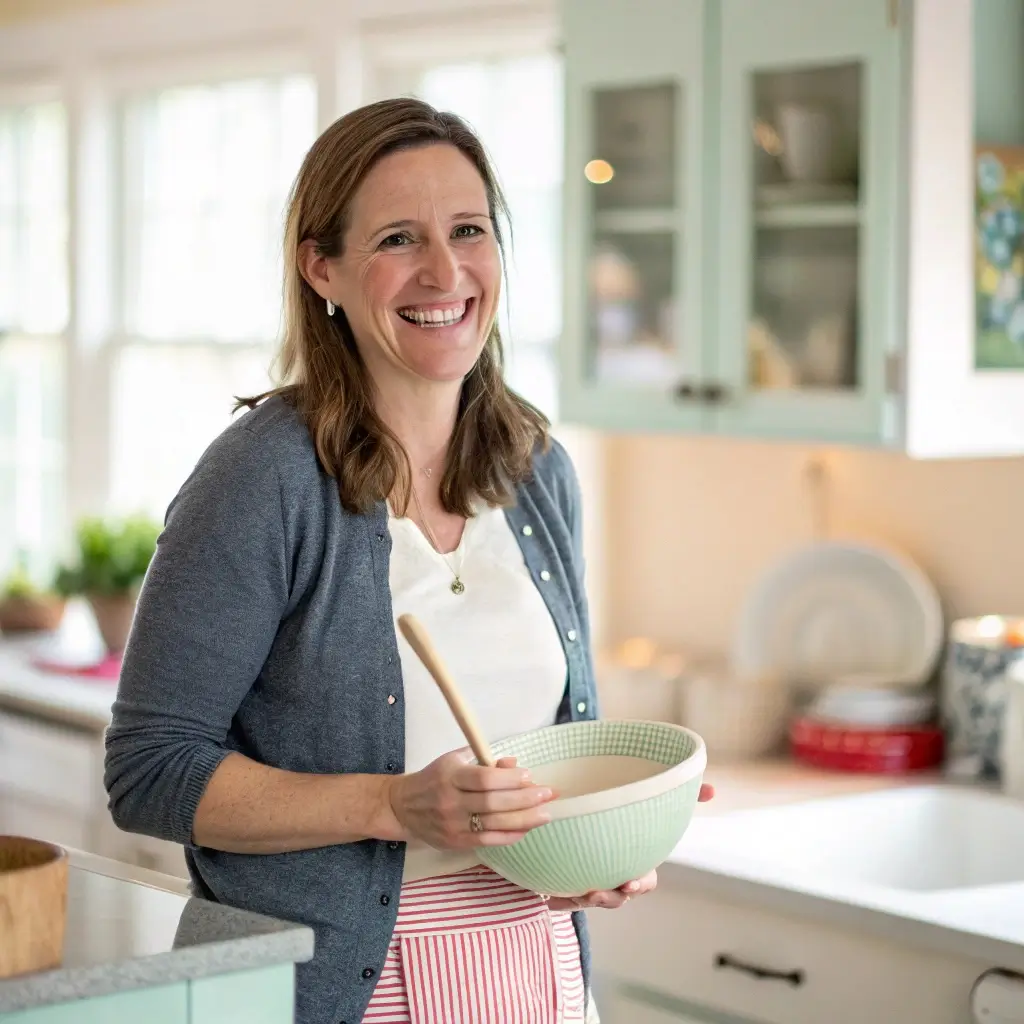Table of Contents
Creating the perfect Thicken Spinach Dip is akin to crafting a masterpiece. It’s not just about mixing ingredients together; it’s about achieving a harmony of flavors, textures, and, crucially, the right consistency. Many home cooks and even seasoned chefs have faced the disappointment of a spinach dip that’s too thin, lacking the creamy, indulgent feel that makes this dish a favorite. The challenge lies not only in the preparation but in understanding the components and how they interact to create the final product. This article aims to guide you through the nuances of achieving that ideal consistency, transforming your spinach dip from merely good to truly great.
Understanding Thicken Spinach Dip Consistency
The Basics of Thicken Spinach Dip
At its heart, a spinach dip is a blend of creamy base ingredients, spinach, and seasonings. The creamy base often includes dairy products like cream cheese, sour cream, or mayonnaise, which are chosen for their rich texture and ability to bind the other ingredients together. Spinach, the star of the show, can be used fresh or frozen, each bringing its own texture and moisture content to the dip.
- Components of a Good Spinach Dip: A stellar spinach dip strikes a balance between creaminess and flavor. The dairy components should be rich but not overwhelming, allowing the taste of spinach and the chosen seasonings to shine through. The dip’s consistency should be thick enough to cling to your favorite dippers without being gloopy.
- Common Causes of Runny Spinach Dip: Several factors can contribute to a dip that’s too runny. Excess moisture from the spinach, especially if using frozen spinach that hasn’t been properly drained, is a common culprit. Additionally, an imbalance in the ratio of creamy base ingredients to spinach can result in a dip that lacks body. Understanding these factors is crucial in troubleshooting and perfecting your spinach dip recipe.
Achieving the perfect consistency for your spinach dip is about more than just following a recipe; it’s about understanding how each ingredient contributes to the overall texture and making adjustments as needed. With the right knowledge and techniques, you can ensure your spinach dip is consistently delicious and perfectly thickened, ready to be the highlight of any gathering.
Essential Techniques to Thicken Spinach Dip
Achieving the perfect thickness for your spinach dip involves a blend of art and science, with each ingredient playing a pivotal role. Here are some effective techniques to ensure your dip has just the right consistency.
Adding Ingredients to Thicken Spinach Dip
- Increasing Vegetable Content: Adding more spinach is a straightforward way to thicken your dip. Spinach not only adds volume but also absorbs moisture, which can help achieve a denser consistency. For frozen spinach, make sure it’s thoroughly drained, even pressed, to remove excess water. With fresh spinach, a quick sauté to reduce its water content before mixing it into your dip can make a significant difference.
- Using Greek Yogurt or Sour Cream: Both Greek yogurt and sour cream can add creaminess and thickness to your dip. Greek yogurt, with its thick and creamy texture, is a healthier alternative that doesn’t compromise on consistency. Sour cream, on the other hand, brings a rich tanginess that can enhance the overall flavor profile of your dip. Depending on your taste preference, you can use one or a combination of both to achieve the desired thickness.
- Incorporating More Cheese: Cheese is another excellent thickener, adding both flavor and a creamy texture. Gradually mix in small amounts of finely shredded cheese until the dip reaches your preferred consistency. Cheeses that melt well, such as cheddar, mozzarella, or a bit of Parmesan, are ideal choices.
Adjusting Liquid Content
- Reducing Added Liquids: If your recipe calls for liquid ingredients like water or milk, consider reducing the amount. This simple adjustment can prevent your dip from becoming too thin.
- Substituting Ingredients for Creaminess: Instead of liquid, use ingredients that contribute to the dip’s creaminess without diluting it. Cottage cheese, for example, can be a great substitute for milk in some recipes, offering a creamy texture while keeping the dip thick.
Preparation Methods
- Mixing Techniques to Avoid Liquefying: The way you mix your dip can significantly affect its texture. Over-mixing, especially with a food processor, can break down ingredients too much, leading to a runny consistency. Instead, opt for gentle hand mixing, which allows you to control the texture more effectively, ensuring the dip remains thick and chunky.
- The Role of Food Processors vs. Hand Mixing: While food processors are convenient, they can sometimes do their job too well, liquefying ingredients and making your dip too thin. Hand mixing, using a fork or a spoon, lets you fold the ingredients together, maintaining their integrity and resulting in a thicker dip.
By using these thickening techniques, you can control your spinach dip’s consistency for a perfect thickness every time. Adjust ingredient ratios, mix methods, and tweak recipes to suit your preferences, creating a delicious dip with ideal texture.
Ingredient-Specific Tips
To master the art of a perfectly thickened spinach dip, understanding how to leverage specific ingredients is key. From the dairy products that form the creamy base to the vegetables that provide body and flavor, each component plays a crucial role.
Leveraging Dairy Products
- Choosing the Right Type of Cheese: The type of cheese you incorporate into your spinach dip can significantly affect its texture and flavor. Soft, creamy cheeses like cream cheese melt beautifully into the dip, providing a smooth base. For a stretchy texture and a bit of sharpness, consider adding shredded mozzarella or cheddar. Parmesan or pecorino can offer a salty, umami kick. The key is to add cheese gradually and taste as you go, ensuring the dip remains balanced and not overly thick.
- The Impact of Greek Yogurt vs. Sour Cream: Both Greek yogurt and sour cream are excellent for adding creaminess and tang to your spinach dip. Greek yogurt, with its thicker consistency and higher protein content, can make the dip more substantial and slightly healthier. Sour cream, on the other hand, lends a richer flavor and silkier texture. Your choice between the two should depend on the desired healthiness and taste profile of your dip. Sometimes, a combination of both can provide the perfect balance of tanginess and creaminess.
Vegetable Adjustments
- Selecting and Preparing Spinach: The spinach itself, whether fresh or frozen, is the star of the dip and requires careful preparation. Fresh spinach should be washed and dried thoroughly to remove any excess moisture before chopping and adding to the dip. If using frozen spinach, ensure it’s completely thawed and squeezed dry to eliminate water that could thin out the dip. Lightly sautéing fresh spinach can also reduce moisture content and concentrate the flavor.
- Other Vegetables That Can Help Thicken: Beyond spinach, other vegetables can contribute to the thickness and complexity of your dip. Artichokes, either canned or fresh, can be finely chopped and mixed in for additional texture. Pureed white beans or roasted cauliflower can also thicken the dip while adding a subtle, complementary flavor. These vegetables not only enhance the nutritional profile of your dip but also its depth of flavor and consistency.
By carefully choosing and preparing your dairy and vegetable ingredients, you can greatly impact the consistency, flavor, and nutrition of your spinach dip. Each ingredient has unique properties that, when used correctly, can help achieve the desired thick, creamy texture of spinach dip. Experiment with different combinations of these tips to customize your dip to your taste and dietary preferences.
Innovative Spinach Dip Variations and Enhancements
Exploring Flavor Profiles
Infusing Global Flavors into Your Spinach Dip
Explore global flavors by adding unique spices and ingredients from various cultures to your spinach dip. Try curry powder for an Indian twist, za’atar for Middle Eastern flair, or chipotle peppers for a smoky Mexican touch.
Customizing Texture and Consistency
Creative Mix-Ins for Texture Variation
Explore how various mix-ins can not only thicken your spinach dip but also add interesting textures and flavors. Consider ingredients like chopped nuts for crunch, roasted red peppers for a smooth contrast, or even edible seeds like chia or hemp for a subtle pop and nutritional boost.
Dietary Adaptations for Spinach Dip
Making Your Spinach Dip Friendly for All Diets
Accommodate dietary restrictions by providing vegan, gluten-free, or keto-friendly versions of your spinach dip. Use substitutes like cashew cream for dairy, nutritional yeast for a cheesy flavor, and almond flour as a thickener to cater to everyone’s preferences.
FAQs About Thicken Spinach Dip
Navigating the nuances of creating the perfect spinach dip can raise several questions. Here are answers to some of the most frequently asked questions to help you achieve the ideal consistency without compromising on taste.
How can I thicken spinach dip without altering the flavor?
To thicken your spinach dip without changing its flavor, focus on adjusting the texture through the ingredients already present. For example, adding extra grated cheese or more of the base ingredients like cream cheese or sour cream can thicken the dip without altering its flavor. Alternatively, you can use a small amount of a neutral thickener like cornstarch or flour mixed with water to form a slurry. Stir it gently into the dip and heat until thickened.
Can I thicken already made spinach dip?
Yes, you can thicken a spinach dip that’s already been prepared. If you find the consistency too runny, consider gently folding in additional thickening agents like more spinach (if moisture isn’t an issue), cream cheese, or even a tablespoon of a roux made from butter and flour. Heat the dip slightly to integrate the new ingredients and achieve a thicker consistency.
How do I prevent my spinach dip from becoming too thick?
Preventing your spinach dip from becoming overly thick starts with careful measurement and gradual addition of thickening ingredients. However, if your dip becomes too thick, you can thin it by stirring in a small amount of milk, broth, or water until you reach the desired consistency. It’s important to add the liquid slowly and incrementally to avoid making the dip too thin.
Troubleshooting Common Issues
Even with careful preparation, you might encounter issues with your spinach dip’s consistency. Here’s how to address some common problems:
Fixing Over-Thickened Dip
Adjusting Consistency Post-Preparation: If your dip has become too thick after preparation, gently warm it and stir in a small amount of liquid (milk, broth, or water) until it reaches your preferred consistency. The key is to add the liquid gradually and mix well to ensure an even texture.
Maintaining Flavor Balance
Ensuring Flavor Isn’t Compromised by Thickening: When adjusting dip thickness, taste and adjust seasoning carefully. Thickening agents or extra ingredients can dilute flavor, so add salt, lemon juice, or more seasonings as needed.
Conclusion
Creating the perfect spinach dip is a journey of balancing flavors, textures, and consistencies. By using the thickening techniques and ingredient tips, you can create a delicious, creamy dip. Remember, the key to culinary success is experimentation. Feel free to adjust your recipe based on these strategies to find your perfect taste. Happy cooking, and may your spinach dip be the highlight of your next gathering!
Explore more about the nutritional value of spinach on Healthline’s article on Spinach Benefits.





